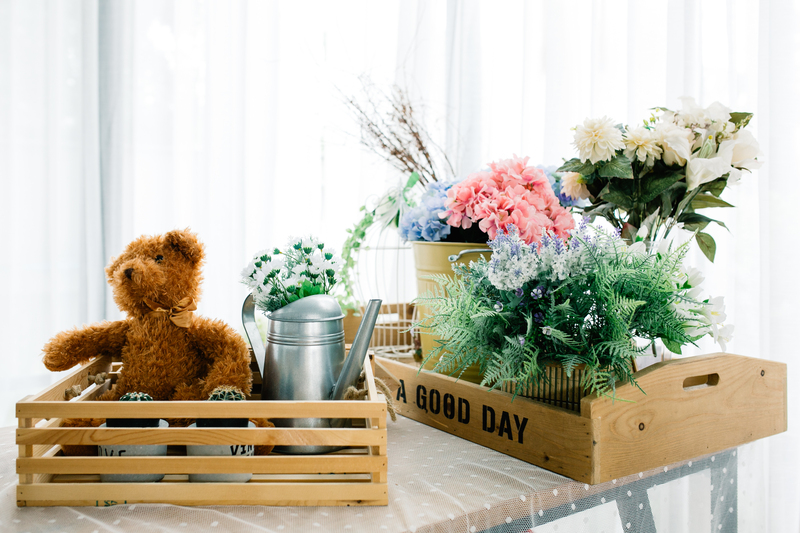Turning Pots and Pans into Something New Through Recycling
Every kitchen has them: pots and pans that have seen better days. Maybe they've lost their nonstick coating, warped with age or simply don't fit your cooking needs anymore. Instead of letting old cookware gather dust or tossing it into the landfill, there's a sustainable and creative solution--recycling old pots and pans. In this comprehensive article, we'll explore how to recycle pans and pots, why it's beneficial, and creative ways to repurpose them into something amazing. Whether you're an eco-conscious homeowner or a crafty DIY-er, you'll find practical information and inspiration here. Let's learn about turning pots and pans into something new through recycling!

Why Recycle Old Pots and Pans?
Before delving into recycling methods, let's discuss why you should recycle cookware instead of discarding it:
- Environmental Impact: Many pots and pans are made from stainless steel, aluminum, copper, and other metals. These materials don't decompose and add to persistent landfill waste.
- Resource Conservation: Recycling old cookware allows metals to be reclaimed, reducing the need for new mining and raw materials.
- Creative Potential: Upcycling pans and pots into creative items gives them a second life as decor, storage solutions, or gardening planters.
- Economic Effect: Donations and recycling can support local organizations and reduce demand for new goods.
By recycling cookware, you play a part in creating a circular economy, minimizing waste and maximizing resources.
What Types of Pots and Pans Can Be Recycled?
Most metal cookware can be recycled or repurposed, including:
- Stainless steel pots and pans
- Aluminum cookware (including nonstick, once coating is removed)
- Copper pots
- Cast iron cookware
- Enamel-coated cookware (if the core is metal and coating is damaged or removed)
Be cautious with:
- Nonstick pans (Teflon-coated or ceramic): Many recycling centers won't accept them with the coating intact because it can contaminate other recyclables. Check with your local facility.
- Cookware with plastic handles or glass lids: These components should be removed and recycled separately where possible.
How to Recycle Pots and Pans: Step-by-Step
1. Assess the Condition
First, determine if the cookware can still serve its original purpose. If it's gently used, consider donating cookware to these places:
- Charity shops
- Women's shelters and homeless shelters
- Community kitchens or local food charities
If the pots and pans are no longer usable for cooking, move on to recycling or upcycling!
2. Clean and Prepare
- Wash all cookware thoroughly to remove food residues and grease.
- Remove non-metal components: Detach plastic handles, glass lids, and rubber parts, as most recycling centers only process pure metals.
3. Find a Metal Recycling Facility
Pots and pans are typically classified as scrap metal. Here's how to recycle metal pots and pans properly:
- Contact your local metal recycling center or scrapyard--many will accept aluminum, steel, copper, and cast iron cookware if the non-metal parts are removed.
- Some municipal recycling programs allow for small metal items curbside; check their website for guidelines.
- Special instructions for nonstick cookware: If your recycling center doesn't accept Teflon-coated pans, consider upcycling them instead.
4. Drop Off and Dispose Responsibly
Bring prepared pots and pans to the designated facility. Some centers pay small sums for metal alloys, while others may accept them for free. Remember to dispose of any hazardous materials (such as broken glass or plastic pieces) through appropriate waste channels.
Creative Ways to Upcycle and Repurpose Old Cookware
Not all pans and pots need to be melted down to serve a new purpose. Upcycling transforms them into functional art or useful items for your home or garden. Here are creative upcycling ideas for old cookware:
1. Turn Pans into Planters
Give new life to old saucepans, frying pans, or Dutch ovens by transforming them into quirky garden planters. Simply add drainage holes to the bottom, fill with potting soil and your favorite flowers or herbs, and display them indoors or out!
2. Wall Art and Clocks
Mount visually appealing pans (like copper or enameled pieces) on the wall for vintage-inspired decor. Or, install clock mechanisms to create unique, functional wall clocks.
3. Birdfeeders and Birdbaths
Large pans and shallow pots make excellent bases for rustic birdbaths or birdfeeders, enhancing your backyard habitat.
4. Storage and Organization
Use old pots as organizers for office supplies, craft items, or kitchen utensils. Stack saucepans for a fun, vertically-styled storage solution on a countertop or desk.
5. Candle Holders and Lanterns
With some simple tools, old pans and pots can be converted into beautiful candle holders or lanterns by adding handles or glass covers.
6. Garden Art and Sculptures
Paint and adhere multiple recycled pans and pots together to build whimsical sculptures, wind chimes, or garden ornaments. This is a fantastic project for kids and families!
Tips and Best Practices for Recycling Cookware
- Check with local authorities: Always confirm with your municipal recycling program or waste management service about specific rules for accepting cookware.
- Separate materials: If a pot combines metal, glass, and plastic, break it down and recycle each material appropriately.
- Remove hazardous coatings: Do not attempt to recycle Teflon or other chemical coatings unless your facility explicitly accepts them.
- Donate when possible: Second-hand stores and community kitchens may welcome gently-used cookware.
- Get creative: Don't ignore the aesthetic value--antique or decorative pots and pans make unique gifts, planters, or kitchen wall art!
Environmental and Community Benefits of Recycling Pots and Pans
Choosing to recycle or upcycle old cookware offers multiple ripple effects:
- Conserves natural resources: Metals can be recycled repeatedly, reducing mining's impact on landscapes and ecosystems.
- Reduces landfill waste: Keeps bulky, non-biodegradable items out of landfills, preserving space and cutting down on pollution.
- Supports local economies: Metal scrapyards and upcycling businesses benefit from the flow of recyclable goods.
- Encourages responsible consumption: Sets a positive example for family and friends, spreading awareness of recycling's importance.
What Happens to Recycled Cookware?
After you drop off your recyclable pots and pans at a registered recycling center, the next steps typically include:
- Sorting: Metals are sorted by type (aluminum, steel, copper, etc.). Some valuable materials are separated for specialized processing.
- Shredding and melting: Metal cookware is shredded into pieces and sent to be melted in a furnace. This process uses far less energy than producing new metals from ore.
- New life: Molten metal is cast or rolled into sheets and used to manufacture new products--from construction beams to car parts, electronics, and even new cookware!
Frequently Asked Questions about Recycling Cookware
Can I put old pots and pans in my curbside recycling bin?
Most curbside services do not accept cookware with coatings, mixed materials, or large kitchen appliances. Always consult your local guide--scrap metal must often be taken to a dedicated drop-off location.
What about damaged nonstick pans?
Nonstick (Teflon-coated) pans present a recycling challenge. Most centers refuse Teflon products, as the coating can't be recycled alongside metals. Look for specialty recycling programs or consider upcycling instead.
How should I dispose of glass lids and plastic handles?
Remove these parts and recycle them through proper glass and plastic channels if accepted locally. Otherwise, dispose of them via household trash (if your area doesn't accept them for recycling).
Can I sell old metal cookware as scrap?
Yes! Many metal scrapyards accept cookware and pay by weight, though the sums are usually modest.

Conclusion: Every Pot and Pan Has Potential
In the journey towards a greener, more sustainable lifestyle, recycling and upcycling old pots and pans represents a small action with a big impact. Whether you donate usable cookware, melt down metals for new products, or get creative with upcycled DIY projects, every step helps reduce waste and conserve resources.
Change starts in the kitchen. Before tossing those battered pans, consider how you can contribute to a sustainable future by turning pots and pans into something new through recycling.
Let's make every meal--and every pan--count for the planet!
